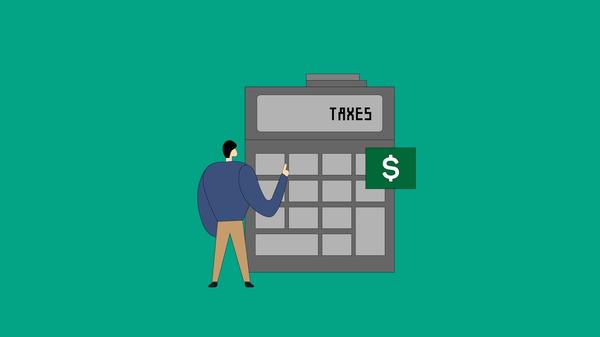A recent CIBC poll found that 32% of Canadians aged 45 to 64 have nothing saved for retirement. Another 19% have saved less than $50,000 for retirement.
While those numbers are alarming, they don’t tell us why the numbers are so low.
Some may still be focusing on debt repayment, raising their children, or widening the gap between their income and expenses. For some, it could be a lack of knowledge about retirement accounts. Others may fear investing or get confused by financial jargon.
It’s important to break through these money blocks because the best way to grow your nest egg is by investing your money, especially inside registered accounts like RRSPs and TFSAs.
Over the next month, we’ll be doing a series on Frequently Asked Questions about different accounts you can use to save money for Future You. First up: the RRSP.
What does RRSP stand for?
Registered Retirement Savings Plan. The registered part essentially means that, since the government is giving you tax benefits for putting money in this account, they want to know how much is in there for their own planning purposes.
What’s the benefit of using an RRSP?
In particular, two features of the RRSP make it an attractive investment vehicle: your contributions are tax-deductible and the growth is tax-deferred.
Tax deductible means that when you put money into your RRSP, you get a tax refund. Here’s a simple example: if you contribute $1000, and your top tax rate is 30%, you’ll receive $300 back ($1000 x 0.3 = $300). This is one way the government incentivizes us to save our money: by making contributions tax deductible. This means that the money you contribute to an RRSP is “before tax” money.
The other benefit is that you don’t need to pay tax on the growth of your investments until you take funds out of the account. This feature allows for faster compounding of returns because your money isn’t getting chipped away at every single year through taxes as it would be in a non-registered account. Instead, all that growth and interest stays in your account and earns you even more each subsequent year.
If you want to dig deeper into the benefits of an RRSP vs. an RSP (non-registered account), you can use a calculator to play around with your own contribution numbers to see how much more you’d have with the RRSP.
What can I put inside an RRSP?
You can fill your RRSP with cash, GICs, bonds, and any qualified investments such as stocks, ETFs and mutual funds. You cannot put your cryptocurrency holdings in there. The exact mix (asset allocation) will depend on you: your age/investing horizon and your risk tolerance. As always, we believe a passive index investing approach is the best way to keep your portfolio balanced and diversified (across asset classes, industries, and the globe) while keeping fees low – ideally, you want MERs below 1%. If you’re not sure where to start, you can read up on two popular model portfolios used by Canadian investors here.
When can I open an RRSP?
Unlike the TFSA, you don’t need to be 18 before you can open an RRSP. Once you’ve completed your first tax return, you get contribution room based on the previous year’s salary and you can then open an RRSP.
How do I open an RRSP?
You can open an RRSP at many financial institutions including your local bank branch. You can now open one at an online brokerage from the comfort of your bed. One option for opening an RRSP online is Questrade, Canada’s fastest growing online brokerage. They have low trading fees for stocks and they have a long list of ETFs that are free to buy, which is especially attractive for investors who plan to hold investments long-term.
If you don’t feel ready for self-directed investing, you may choose to open an RRSP with a robo-advisor instead. Questrade has a robo-advisor arm called Questwealth, and it’s easy to make the switch to self-directed once you feel ready.
What do I need to open an RRSP?
You’ll need to provide proof of identity (such as a driver’s licence) and your social insurance number (SIN).
What’s the maximum I can contribute to my RRSP each year?
You can contribute up to 18% of your reported earnings from the previous year or a maximum of $26,500 in 2019, up from $26,230 in 2018. You can find past RRSP dollar limits here.
Note that if you have a pension through your work, you’ll have to account for the amount you’ve contributed there as well. You’ll find your annual and total contribution room (also known as deduction limit) on your CRA assessment.
Speaking of pension plans, how much should I contribute to my employers’ plan before contributing to my own RRSP?
If you’re lucky enough to have employer matching, you should contribute up to the maximum amount they’ll match. For example, if they’ll match up to 3% of your income, contribute 3% to get as much free money as possible.
After that, it’s up to you whether to add more to the company plan or your own separate RRSP. You may be happy with their investment plan or you may want to manage your own investments more closely. It’s an individual choice. You may also want to contribute toward your TFSA.
Should I contribute to my RRSP or TFSA first?
As above, contribute enough to your RRSP to get the maximum employer match if that’s available to you.
There are two main considerations when deciding which to fund first (or more): tax efficiency and what you’re saving for.
A general rule of thumb is that lower earners should prioritize contributing to their TFSA first, while higher earners should fill their RRSP first. If you expect to be in a higher tax bracket after retirement (lucky you!), then you’d do better to contribute to your TFSA as it won’t add to your taxable income and growth won’t be taxed either.
The other major consideration is what you want to spend your savings on. For example, the RRSP is meant for retirement savings, but you can also make use of the Home Buyers’ Plan and Lifelong Learning Plan. On the other hand, if you’re focused on saving for expenses like a car or a wedding, you should use your TFSA.
It’s February. Have I missed my chance to contribute to toward my 2018 RRSP?
No, but you’ll have to act fast: you can contribute up until March 1 2019.
What happens if I overcontribute?
If you’ve got more than $2000 in excess contributions, it will be taxed at 1% per month. There are further penalties for late and unpaid taxes. It’s also a pain just to fill out the Canada Revenue Agency calculation forms to see how much of a penalty you owe.
What happens to unused contribution room?
You can leave unused contribution room for a future year, indefinitely. For example, a student working part-time may not want to use their contribution room while studying since they likely won’t be paying much in taxes anyway. If you know that you’ll be getting a significant pay bump, it may make sense to carry over contribution room.
An interesting quirk of the tax system: you can still contribute in a particular year, and just delay claiming the tax deduction until a future year.
What should I do with the tax refunds I get from contributing?
A lot of people like to treat themselves to a vacation (or shoes or the latest tech gadget or…) using their tax refund money. At the risk of raining on your parade, consider using 10% as fun money and stashing the rest in your TFSA to really supercharge your savings. You’ll be paying tax on RRSP withdrawals after your career ends, so try not to also spend all your tax refunds during it – that takes away from the benefit of the RRSP.
When do I pay taxes on my RRSP?
Tax on contributions and growth are deferred until the money is withdrawn. You pay tax at whatever your tax rate is that year. Since most of us will be in a lower tax bracket during retirement than during our working years, this means paying less tax on your money.
Is there a penalty for taking money out of my RRSP before age 65?
Unlike in the US, there is no additional tax penalty for taking your retirement money out early.
However, there are many downsides: for one, the money withdrawn is added to your income. If you’re still working, this means you’ll pay more in taxes for this withdrawal than if you had waited until retirement, when your income is lower.
Another negative: by taking money out early, you’re losing out on the portfolio-boosting effects of compounding returns and interest, which work their best magic after decades of investing.
Lastly, you also lose that precious tax-advantaged RRSP contribution room forever.
What happens to my contribution room if I take money out?
If you take out money, you lose that amount of contribution room forever unless you use it for one of the reasons below.
Is the RRSP only for retirement savings?
Technically, it’s structured to be a retirement savings account. However, the government will allow you to take money out for one of the following reasons: to help pay for your education or your partner’s through the Lifelong Learning Plan or help buy a home (Home Buyers’ Plan or HBP). You don’t lose this contribution room as long as you repay the money withdrawn as outlined by the specific Plan.
What is the Home Buyers’ Plan?
The HBP is a federal program that allows you to take up to $25,000 ($50,000 for a couple) out of your RRSP without losing the contribution room. You need to show a signed agreement to purchase or build a home to access these funds through the HBP. Note that the funds must have been in your RRSP for at least 90 days at the time of withdrawal. Once the funds are withdrawn, you have 15 years to make the repayments.
What are the benefits of a spousal RRSP?
Spousal RRSPs are unique in that either spouse (or common-law partner) can contribute and withdraw funds to the account.
They are especially useful for couples where there is a big disparity in incomes and therefore tax brackets. It allows the higher earner to contribute to the spousal RRSP and get a bigger tax deduction.
When you retire, the lower-bracket spouse can withdraw the funds, which again means less paid to taxes. This is especially helpful if one spouse is planning to retire before the other.
What is the maximum age at which you can contribute to an RRSP?
You can contribute up until the end of the year in which you turn 71. If you have a spousal RRSP, you can contribute up until the end of the year that the younger person turns 71.
What happens to an RRSP at age 71?
You will have three options at that stage:
a) Convert the RRSP into a RRIF (Registered Retirement Income Fund)
b) Convert the RRSP to an annuity
c) Cash it all out (note you’ll be paying the tax on all of it at once which may put you in the highest tax bracket, so this is generally not the best option)
What are the features of an RRIF?
That’s a topic for a future post. In the meantime, find out how you can benefit from saving and investing in two other tax-advantaged accounts: the TFSA and the RESP.


